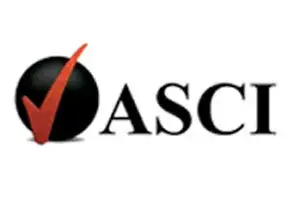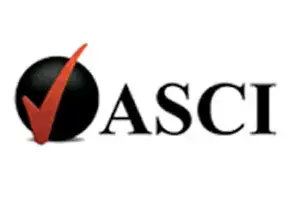ASCI releases Guidelines to govern Ads for Cryptocurrency
 On February 23, 2022, the Advertising Standards Council of India came out with guidelines to regulate the advertising and promotion of Virtual Digit Asset exchange and trading platforms and associated services, as a necessary interim measure.
On February 23, 2022, the Advertising Standards Council of India came out with guidelines to regulate the advertising and promotion of Virtual Digit Asset exchange and trading platforms and associated services, as a necessary interim measure.
Refund an Absolute Right under RERA, if Builder goes Wrong!-
 The homebuyers/ allottees hold an unqualified and unconditional absolute right to seek refund of the amount, if the builder fails to complete or is unable to give possession of the apartment, plot or building.
The homebuyers/ allottees hold an unqualified and unconditional absolute right to seek refund of the amount, if the builder fails to complete or is unable to give possession of the apartment, plot or building.
Guidelines on Extended Producers Responsibility on Plastic Packaging
 Extended Producer Responsibility is an approach where the producer is mandated via policy for treatment and/or disposal of plastic packaging waste. The Ministry of Environment has announced national framework for extended producer responsibility (EPR) on plastic packaging.
Extended Producer Responsibility is an approach where the producer is mandated via policy for treatment and/or disposal of plastic packaging waste. The Ministry of Environment has announced national framework for extended producer responsibility (EPR) on plastic packaging.
Court directs Indian News portal to take down defamatory articles against COVAXIN and Bharat Biotech
 Bharat Biotech, an Indian pharmaceutical company, filed a defamation suit before the Ranga Reddy District Court (Telengana) alleging that ‘The wire’ and its writers and editors published several defamatory articles on its portal.
Bharat Biotech, an Indian pharmaceutical company, filed a defamation suit before the Ranga Reddy District Court (Telengana) alleging that ‘The wire’ and its writers and editors published several defamatory articles on its portal.
ASCI releases Guidelines to govern Ads for Cryptocurrency

By Vikrant Rana and Ragini Ghosh
Advertisements for Virtual Digital Assets
In recent days, most of us have been afflicted by advertisements flaunting the benefits of investing in cryptocurrency, touting them to be a sure-fire scheme to earn thousands, even lakhs, in a matter of moments. Numerous cryptocurrency exchanges and apps have burst onto the scene and taken over aggressive advertising, especially in the online sphere, invoking customers to invest nominal amounts with a guarantee of enormous lucrative returns. These ads have been designed so cleverly to tempt and lure a curious consumer into speculating in these new fangled assets, that it is easy to forget just how volatile the market for cryptocurrency actually is and that it is a completely unregulated form of currency, with no regulatory fall-back option. In fact, these ads as well as corresponding social media hype is so effective regarding the subject matter, that one would be forgiven for having FOMO for not investing in crypto!
Virtual Digital Assets (VDA’s) encompasses cryptocurrency and NFTs (Non Fungible Tokens, another new form of virtual asset, comprising of authenticated ownership of a piece of digital art or media). With the on-set of metaverse compatible internet marketplaces, VDA’s have arrested everyone’s attention and have exploded in popularity over the last few years, fuelled by additional time spent by citizens on the internet owing to the effects of the global pandemic. While information and know-how about VDA’s has certainly been widely disseminated all across the internet as well as over recent news headlines and celebrity endorsements, it is however being seen that common knowledge about VDA’s among the general public is inadequate for making secure financial investments.[1]
Additionally, the Budget 2022 introduced, for the first time, a taxation regimen with respect to crypto assets wherein there is now a flat 1% tax imposed on gains from crypto assets, and a 1% tax deducted at source on each crypto transaction.
It is, therefore, to ensure consumer safety, so that lay citizens do not enter into detrimental financial liabilities and undertake uncalculated risks, that ASCI has considered it imperative to regulate the proliferating advertising of such speculative and volatile financial products.
ASCI’s Objective and Statement
On February 23, 2022, the Advertising Standards Council of India (ASCI) came out with guidelines to regulate the advertising and promotion of VDA exchange and trading platforms and associated services, as a necessary interim measure while the Indian government continues to work on coming out with a comprehensive regulatory structure to control such assets. These guidelines have been formulated after extensive consultation with all stakeholders, including the government and are intended to come into effect for all VDA related advertisements and promotions post April 01, 2022. Additionally, advertisers and media owners must also ensure that all earlier advertisements must not appear in the public domain unless they comply with the guidelines, post 15th of April 2022.
ASCI has stated that: “Advertising for these products [VDA’s] has been very aggressive over the past few months. The Advertising Standards Council of India (ASCI) noted that several of these advertisements do not adequately disclose the risks associated with such products. In order to safeguard consumer interest, and to ensure that ads do not mislead or exploit consumers’ lack of expertise on these products, ASCI has extensively consulted with different stakeholders including government and the virtual digital asset industry – to frame guidelines for virtual digital asset advertising.”
Salient features of ASCI Guidelines on Ads for Cryptocurrency
The salient guidelines as released by ASCI[2] are summarized below:
- All ads for VDA products and VDA exchanges, or featuring VDAs, must carry the following disclaimer:“Crypto products and NFTs are unregulated and can be highly risky. There may be no regulatory recourse for any loss from such transactions.”Such a disclaimer must be made in the following manner so that it is PROMINENT and UNMISSABLE by an average consumer.
- In print or static, equal to at least 1/5th of the advertising space at the bottom of the advertisement in an easy to read font, against a plain background, and to the maximum font size afforded by the space.
- In video, the disclaimer should be placed at the end of the advertisement against a plain background. A voiceover must accompany the disclaimer in text. The voiceover should be at a normal speaking pace and must not be hurried. In the case of long format video of over two minutes, the said disclaimer should be repeated at the beginning and at the end of the video. The disclaimer must remain on screen for a minimum of five seconds.
- In audio, the disclaimer must be spoken at the end of the advertisement. The voiceover should be at a normal speaking pace and must not be hurried. In the case of long format audio of over 90 seconds, the said disclaimer should be repeated at the beginning and at the end of the audio.
- In social media posts, such a disclaimer must be carried in both- the caption as well as any picture or video attachments. The disclaimer within the caption must be placed upfront at the beginning of the post. Where social media posts or advertisements have restrictions on text in the static picture, the disclaimer must be carried upfront in the caption before the fold.
- In disappearing stories or posts unaccompanied by text, the said disclaimer will need to be voiced at the end of the story in the manner laid out in points (a) or (b) above. If the video is 15 seconds or lesser, then the disclaimer may be carried in a prominent and visible manner as an overlay.
- In formats where there is a limit on characters, the following shortened disclaimer must be used “Crypto products and NFTs are unregulated and risky” followed by a link to the full disclaimer.
- The disclaimer must be made in the dominant language of the advertisement
- In addition to the above, all disclaimers must meet the minimum requirements laid down in the ASCI guidelines for disclaimers.
- The words “currency”, “securities”, “custodian” and “depositories” may not be used in advertisements of VDA products or services as consumers associate these terms with regulated products.
- The information contained in advertisements shall not contradict the information or warnings that the regulated entities provide to customers in the marketing of VDA products from time to time.
- Advertisements that provide information on the cost or profitability of VDA products shall contain clear, accurate, sufficient and updated information. For example, “zero cost” will need to include all costs that the consumer might reasonably associate with the offer or transaction.
- Information on past performance shall not be provided in any partial or biased manner. Returns for periods of less than 12 months shall not be included.
- Every advertisement for VDA products must clearly give out the name of the advertiser and provide an easy way to contact them (phone number or email). This information should be presented in a manner that is easily understood by the average consumer.
- No advertisement for VDA products or exchanges may show a minor, or someone who appears to be a minor, directly dealing with the product, or talking about the product.
- No advertisement may show that VDA products or VDA trading could be a solution to money problems, personality problems or other such drawbacks.
- No advertisement shall contain statements that promise or guarantee future increase in profits.
- No advertisement may show that understanding VDA products is so easy that consumers do not have to think twice about investing. Nothing in the ad should downplay the risks associated with the category.
- VDA products may not be compared to any other asset class which is regulated.
- Since this is a risky category, celebrities or prominent personalities who appear in VDA advertisements must take special care to ensure that they have done their due diligence about the statements and claims made in the advertisement, so as not to mislead consumers.
Conclusion
VDA’s are indeed a revolutionary way of acquiring assets and wealth, specifically for the generations growing up with the Internet, and that in itself has sparked a great deal of curiosity among younger investors. However, it is important to keep in mind that VDA’s are complex entities and their transactional impacts have not yet been fully understood. Being an emerging channel of investing, it will require specific guidance and consumers must be hand-held at this stage through initial risks and advised to proceed with caution. Flashy advertisements which gloss over the negatives and pitch investing in VDA’s as a glamorous and lucrative financial option are dangerous lure for this section of consumers and they may end up making misinformed decisions which may in turn prove harmful for the economy as a whole. Additionally, being still unregulated, investing in VDA’s poses the significant risk of having no option for appeal or redress should things go wrong and speculations take a turn for the worse.
Thus, stipulating guidelines is an important step taken by ASCI to protect consumer interests and ensure that commercial entities dealing in such assets do not mislead consumers by implication, ambiguity, exaggeration or omission, and are not framed in a way that abuses their trust or exploits their lack of knowledge. That said, while these new ASCI guidelines will rightly be heralded as a much needed development, there are a few aspects in the rules which may be considered to be regressive. For instance, the prohibition of usage of the word “currency” in respect of advertisements for VDA products seems a tad unnecessary, as for instance, Bitcoin or Doge, at the end of the day, are Crypto-currency, and the same should not be sugar-coated.
The guidelines framed by ASCI will serve as an important interim measure for self-regulation of such advertising content until a legal framework is officially brought into place by requisite legislation.
[1] See: https://www.cnbc.com/2021/03/04/survey-finds-one-third-of-crypto-buyers-dont-know-what-theyre-doing.html as on February 28, 2022.
[2] See: https://ascionline.in/images/pdf/vda-guidelines-press-release-feb-23.pdf
Related Posts
Refund an Absolute Right under RERA, if Builder goes Wrong!

By Lucy Rana and Nihit Nagpal
Homebuyers invest their hard earned savings into the real estate projects with a hope that they will own their dream house one day. However, their dreams gets shattered when the builders fail to deliver possession of their units even after a prolonged delay. The Consumer Protection Act, 2019 protects the home buyers (consumers) to get relief and compensation for deficiency in services and unfair trade practices against the builders, however redressal takes a long time. Thus, to provide speedy resolution to the home buyers against the delayed possession of their residential homes, the Real Estate (Regulation and Development) Act, 2016 was enacted by the parliament to protect and safeguard the investments made by the home buyers. The Act makes prior registration of a real estate project with the Real Estate Regulatory Authority mandatory, therefore, a project cannot be promoted or advertised for sale without registering the real estate project with the Authority.[1]
Any aggrieved person may file a complaint with the Authority or the Adjudicating Officer for any violation or contravention of the provisions of the Act including the Delay in Possession [2] The two remedies which can be availed by the buyers in case of delay of possession or any other violation are ‘refund of amount’ and ‘compensation’ under the Act.
The case of Compensation:
The allottee is entitled to receive compensation in the event there is any structural defect or any other defect in workmanship, etc.[3] The allottee is also entitled to receive compensation in case the loss is caused to allottee due to defective title of the land, on which the project is being developed or has been developed.[4]
The allottee is further entitled to receive compensation if the promoter fails to discharge any other obligation under the Act which includes the delay in possession, as the time of handing over the possession of the unit is prescribed in the terms and conditions of the agreement.[5]
The case of Refund:
The allottee or home buyer holds an unqualified right to seek refund of the amount with interest if the builder fails to complete or is unable to give possession of an apartment, plot or building either in terms of the agreement for sale or to complete the project by the date specified therein or on account of discontinuance of his business as a developer either on account of suspension or revocation of the registration under the Act.[6]
Challenges faced by Allottees or Buyers while fighting for Refund under the Real Estate (Regulation and Development) Act, 2016:
| Challenges faced by Allottees | Combatting the Challenges by Judiciary |
| 1. Refund cases linked to the stage of construction or obtaining of the occupation certificate.
Earlier cases of refund were contingent upon the stage of construction and refund was not given when the construction was at an advance stage. |
It is now a settled position in law that the allottee holds an unqualified right to seek refund of the amount.
The Supreme Court of India vide its land mark judgement Newtech Promoters and Developers Pvt. Ltd. v. State of U.P.[7] dated November 11, 2021 held that the allottee holds the right of refund on demand as an unconditional absolute right, if the promoter fails to give possession of the unit within the time stipulated under the terms of the agreement regardless of unforeseen events or stay orders of the Court/Tribunal, provided that the allottee wishes to withdraw from the project. Thus, the unqualified right of the allottee to seek refund is not dependent on any contingencies or stipulations. |
| 2. Ambiguity about the Powers of Authority and Adjudicating Officer for granting Refund.
Earlier cases of refund were delegated by the Authority to the Adjudicating Officer under their power to delegate their functions[8]. |
The Supreme Court of India vide its land mark judgement Newtech Promoters and Developers Pvt. Ltd. v. State of U.P.[9] dated November 11, 2021 cleared the ambiguity and held that it is the Regulatory Authority who has exclusive jurisdiction to direct refund to allottee, whereas the Adjudicating Officer only has the power to determine the compensation.
Further, the High Court of Punjab and Haryana vide its decision in Ramprastha Promoters and Developers Pvt. Ltd. v. Union of India[10] dated January 13, 2022 reiterated the judgement of the Supreme Court in Newtech Promoters and Developers Pvt. Ltd. v. State of U.P. and held that the Regulatory Authority would have the jurisdiction to entertain a complaint seeking refund of the amount due to delay in possession. |
Conclusion:
The allottees hold an unqualified and unconditional absolute right to seek refund of the amount, not dependent on any contingencies with interest, if the builder fails to complete or is unable to give possession of the apartment, plot or building, if the allottee wishes to withdraw from the project, and such power to direct such refund to allottees lies exclusively with the Authority. In view of the aforesaid judgements, the refund cases pending with the Adjudicating Officer are now being transferred to the Regulatory Authority.
Karanveer Singh, Junior Associate at S.S. Rana & Co. has assisted in the research of this article.
[1] Section 3. Prior registration of real estate project with Real Estate Regulatory Authority.
[2] Section 31. Filing of complaints with the Authority or the adjudicating officer.
[3] Section 14(3). In case any structural defect or any other defect in workmanship, quality or provision of services or any other obligations of the promoter as per the agreement for sale relating to such development is brought to the notice of the promoter within a period of five years by the allottee from the date of handing over possession, it shall be the duty of the promoter to rectify such defects without further charge, within thirty days, and in the event of promoter’s failure to rectify such defects within such time, the aggrieved allottees shall be entitled to receive appropriate compensation in the manner as provided under this Act.
[4] Section 18(2). The promoter shall compensate the allottees in case of any loss caused to him due to defective title of the land, on which the project is being developed or has been developed, in the manner as provided under this Act, and the claim for compensation under this subsection shall not be barred by limitation provided under any law for the time being in force.
[5] Section 18(3). If the promoter fails to discharge any other obligations imposed on him under this Act or the rules or regulations made thereunder or in accordance with the terms and conditions of the agreement for sale, he shall be liable to pay such compensation to the allottees, in the manner as provided under this Act.
[6] Section 18(1). If the promoter fails to complete or is unable to give possession of an apartment, plot or building: (a) in accordance with the terms of the agreement for sale or, as the case may be, duly completed by the date specified therein; or (b) due to discontinuance of his business as a developer on account of suspension or revocation of the registration under this Act or for any other reason, he shall be liable on demand to the allottees, in case the allottee wishes to withdraw from the project, without prejudice to any other remedy available, to return the amount received by him in respect of that apartment, plot, building, as the case may be, with interest at such rate as may be prescribed in this behalf including compensation in the manner as provided under this Act: Provided that where an allottee does not intend to withdraw from the project, he shall be paid, by the promoter, interest for every month of delay, till the handing over of the possession, at such rate as may be prescribed.
[7] MANU/SC/1056/2021
[8] Section 81. The Authority may, by general or special order in writing, delegate to any member, officer of the Authority or any other person subject to such conditions, if any, as may be specified in the order, such of its powers and functions under this Act, as it may deem necessary.
[9] MANU/SC/1056/2021
[10] MANU/PH/0046/2022
Related Posts
WHEN THE BUILDER GETS TOUGH, RERA WILL GET GOING!
RERA ACT DOES NOT BAR REMEDIES UNDER CONSUMER PROTECTION ACT
Guidelines on Extended Producers Responsibility on Plastic Packaging

By Rupin Chopra and Apalka Bareja
Plastic waste management is an initiative to control the amount of plastic waste in the environment by adopting circular economy and other environmental-friendly disposal solution. It aims to ban plastic products which affordable alternatives are available, encourage plastic production with circular materials, and establish high uptake of recycled plastics.
Circular economy: Repositioning of the plastic waste and disposal
In a circular economy, resources are used in a more sustainable way by maintaining their use for as long as possible, thus extracting their maximum value, and then recovering and regenerating the materials at the end of their life. Under this scheme, materials are constantly cycled through the value chain for reuse, resulting in lower energy and resource consumption.
This initiative was started several years ago in Europe, mainly focusing on reusing or recycling plastic waste entering earth’s environment. This initiative soon reached other parts of the world and have now become an integral part of global plastic manufacturers’ strategy. More than 65% of plastic waste is expected to be left unattended, either in large landfills or simply left in the natural environment, which develops to be the biggest source of plastic pollution. Currently, only 16% of plastic waste is recycled.
In India approximately 25,000 to 30,000 tonnes of plastic waste is generated every day. Approximately 10,556 tonnes of this waste remains uncollected and thus reaches landfills or is thrown on the streets. The new guidelines on EPR aim to provide brands and manufacturers with directions to manage extended producer responsibility (EPR) legislation. The laws make it mandatory for companies to collect-back and recycle their plastic. The new guidelines provide a robust framework to strengthen the circular economy of plastic packaging waste and will pave the direction for businesses to move towards sustainable plastic packaging.
Extended Producers Responsibility
The Ministry of Environment, Forest and Climate Change (MoEFCC) announced the national framework for extended producer responsibility (EPR) on plastic packaging under Plastic Waste Management Rules, 2016. Extended Producer Responsibility is an approach where the producer is mandated via policy for treatment and/or disposal of plastic packaging waste. It is proved that assigning such responsibility could in principle provide incentives to prevent wastes at the source, promote product design for the environment and support the achievement of public recycling and materials management goals.
Key Highlights of extended producer responsibility (EPR) on plastic packaging
- The EPR framework is broken up into three segments – each suited to small, medium or large businesses. The three models are officially called: fee-based model, Producer Responsibility Organizations (PROs) model and credit model. PROs are third party entities that manage waste on behalf of manufacturers.”
- The guidelines on extended producer responsibility coupled with prohibition of identified single use plastic items, which have low utility and high littering potential, with effect from 1st July 2022, are important steps for reducing pollution caused due to littered plastic waste in the country which is in line and essential in order to meet the target to cut carbon emissions by 2030 with respect to the Paris Agreement.
- The policy mandates to reuse rigid plastic packaging material and to reduce the use of fresh plastic material for packaging. Further, the new norms will increase the quality and standard as the guidelines allow for sale and purchase of surplus extended producer responsibility certificates, carry forward and offsetting against previous year EPR targets and obligations, thus formalizing the sector and developing up a market scenario for better plastic waste management.
- As per the new norms, small manufacturers have to contribute to a local body that recycles small amounts of plastics. Medium and large scale manufacturers that do not have experience and expertise in recycling can hire Producer Responsibility Organizations (PRO’s), and during this period of transition to the new framework, these businesses can hire ‘Plastics For Change’ as a PRO.
- The new norms will impose an ‘Environmental Compensation’ which shall be levied on the basis of Polluter Pays Principle (PPP). The guidelines same shall be laid down by the Central Pollution Control Board.
- The whole process of implementation of EPR norms including registration, filing of annual returns by producers, importers and brand owners and the registration of PROs as well will be administered through a customized centralized online portal developed by the Central Pollution Control Board. The certificate of registration and filing will also be done using the same portal.
These new guidelines will come in effect 1st July 2022 onwards and will improve the condition of plastic waste management and hopefully reduce the amount of plastics utilized in the packaging of products.
Related Posts
PHASING OUT SINGLE USE PLASTICS- CPCB
VIOLATION OF PLASTIC WASTE MANAGEMENT RULES- CPCB ISSUES SHOW CAUSE NOTICE TO TOBACCO COMPANIES
References
https://www.genevaenvironmentnetwork.org/resources/updates/plastic-waste-management/
Court directs Indian News portal to take down defamatory articles against COVAXIN and Bharat Biotech

The Covid-19 Vaccine COVAXIN was developed by Bharat Biotech in collaboration with the Indian Council of Medical Research – National Institute of Virology (leading institution of Government of India). As per the Government Portal www.cowin.com, COVAXIN is India’s second largest used vaccine with more than 283 million doses. Since, launch of ‘COVAXIN’ and approval from the Government of India, its manufacturer Bharat Biotech grabbed more attention of several Indian and foreign news publishers and media houses. However, several news articles published by an Indian non-profit news and opinion website, The Wire, defamed the Vaccine manufacturer and the vaccine which resulted in a Rs. 100 crore defamation suit.
The Bharat Biotech, an Indian pharmaceutical company, filed a defamation suit before the Ranga Reddy District Court (Telengana) alleging that ‘The wire’ and its writers and editors published several defamatory articles on its portal.
Apart from ‘The Wire’, the following individuals (who wrote the articles) were made party to the suit:
- Siddharth Varadarajan- Founding Editor;
- Sidharth Bhatia- Founding Editor;
- Mangalam Venu Kesavan – Founding Editor;
- Neeta Sanghi;
- Vasudevan Mukunth;
- Shobhan Saxena;
- Florencia Costa;
- Prem Anand Murugan;
- Banjot Kaur;
- Priyanka Pulla;
- Seraj Ali;
- Jammi Nagaraj Rao.[1]
Senior Advocate Vivek Reddy, who represented the pharmaceutical company, argued that the news portal published several articles without any proper fact-check and those articles contains hoax allegations against Bharat Biotech and its vaccine COVAXIN. Those articles were circulated by the news portal, with the sole and malicious intent to undermine the reputation of Bharat Biotech, even after the Government of India had approved the vaccine.
After hearing the arguments, the Additional District Judge directed ‘The Wire’ to take down 14 defamatory articles from its website and internet within 48 hours and also restrained all the defendants from publishing any article that defames Bharat Biotech or its product.
The Court also highlighted the fact that Bharat Biotech is the only candidate which has been authorized to manufacture the vaccine for children between 15 to 18 years and that the defamatory articles published on the website will lead to vaccine hesitancy.[2]
Later, Mr. Siddharth Varadarajan, the founding editor of ‘The Wire’, tweeted that no advance service or chance was given to them to refute the ‘false claims’ made by Bharat Biotech.
Shilpi Sinha, Associate at S.S. Rana & Co. has assisted in the research of this article.


